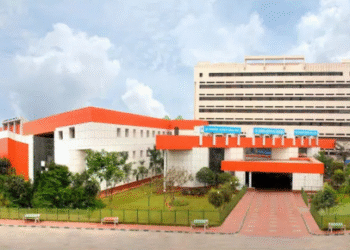1. Introduction to Scar Removal
Scar removal through plastic surgery has become increasingly popular. This procedure aims to reduce the appearance of scars, helping patients regain confidence and improve their skin’s texture.
2. Understanding Scar Formation
Scars form as a natural part of the healing process after an injury or surgery. They can vary in size, shape, and color depending on the severity of the wound and the individual’s skin type.
3. Types of Scars
There are various types of scars, including hypertrophic scars, keloid scars, and atrophic scars. Each type requires a different approach for effective treatment.
4. Consultation Process
The first step in scar removal is a thorough consultation with a plastic surgeon. This helps determine the best treatment plan based on the type and location of the scar.
5. Treatment Options
Several treatment options are available for scar removal, including surgical revision, laser therapy, dermabrasion, and chemical peels. Each option has its own benefits and is chosen based on the individual case.
6. Surgical Scar Revision
Surgical scar revision involves removing the old scar and carefully closing the wound to create a less noticeable scar. This procedure is often used for large or deep scars.
7. Laser Therapy
Laser therapy uses focused light beams to reduce scar tissue and stimulate the growth of healthy skin. It is effective for both fresh and old scars, improving their texture and color.
8. Dermabrasion
Dermabrasion involves the controlled removal of the top layers of skin using a specialized device. This technique smoothens the skin’s surface, reducing the appearance of scars.
9. Chemical Peels
Chemical peels use acid solutions to exfoliate the skin and remove damaged outer layers. This treatment can improve the texture and tone of the skin, making scars less noticeable.
10. Before and After Photos
Before and after photos are essential for understanding the potential outcomes of scar removal procedures. They provide a visual representation of the improvements that can be achieved.
11. Patient Testimonials
Patient testimonials offer insights into the experiences of those who have undergone scar removal treatments. They highlight the emotional and physical benefits of the procedures.
12. Recovery Process
Recovery from scar removal varies depending on the treatment used. Patients may experience redness, swelling, and minor discomfort, but these effects typically subside within a few weeks.
13. Post-Treatment Care
Proper post-treatment care is crucial for optimal results. Patients are advised to keep the treated area clean, avoid sun exposure, and follow the surgeon’s recommendations for skincare.
14. Expected Results
While complete scar removal is not always possible, significant improvement in the scar’s appearance can be achieved. Results can vary based on the individual’s skin type and the nature of the scar.
15. Risks and Considerations
As with any medical procedure, scar removal carries some risks, including infection, changes in skin color, and dissatisfaction with the results. It’s important to discuss these with the surgeon.
16. Choosing the Right Surgeon
Selecting a board-certified plastic surgeon with experience in scar removal is crucial for achieving the best possible outcome. Research and patient reviews can help in making an informed decision.
17. Cost of Scar Removal
The cost of scar removal varies depending on the type of treatment, the extent of the scarring, and the surgeon’s expertise. It’s important to discuss costs during the consultation.
18. Insurance and Financing
Scar removal is often considered a cosmetic procedure and may not be covered by insurance. However, many clinics offer financing options to make the treatments more affordable.
19. Innovative Techniques
Advancements in medical technology have led to the development of innovative techniques for scar removal, providing patients with more effective and less invasive options.
20. Combination Treatments
In some cases, a combination of treatments may be used to achieve the best results. For example, laser therapy might be combined with surgical revision for optimal improvement.
21. Long-Term Benefits
Successful scar removal can have long-term benefits, including improved self-esteem, enhanced skin appearance, and greater comfort in social situations.
22. Emotional Impact
Scars can have a significant emotional impact on individuals, affecting their confidence and quality of life. Effective scar removal can help alleviate these feelings and promote emotional well-being.
23. Realistic Expectations
Setting realistic expectations is important for patients considering scar removal. While improvements can be substantial, complete eradication of scars is rare.
24. Maintenance and Follow-Up
Regular follow-up appointments and maintenance treatments may be necessary to ensure the best long-term results. Ongoing care can help maintain the appearance of the treated area.
25. Conclusion: Transforming Lives
Plastic surgery for scar removal offers a transformative opportunity for individuals seeking to improve their appearance and self-confidence. With the right approach and professional care, scars can become a less noticeable part of one’s life story.
















